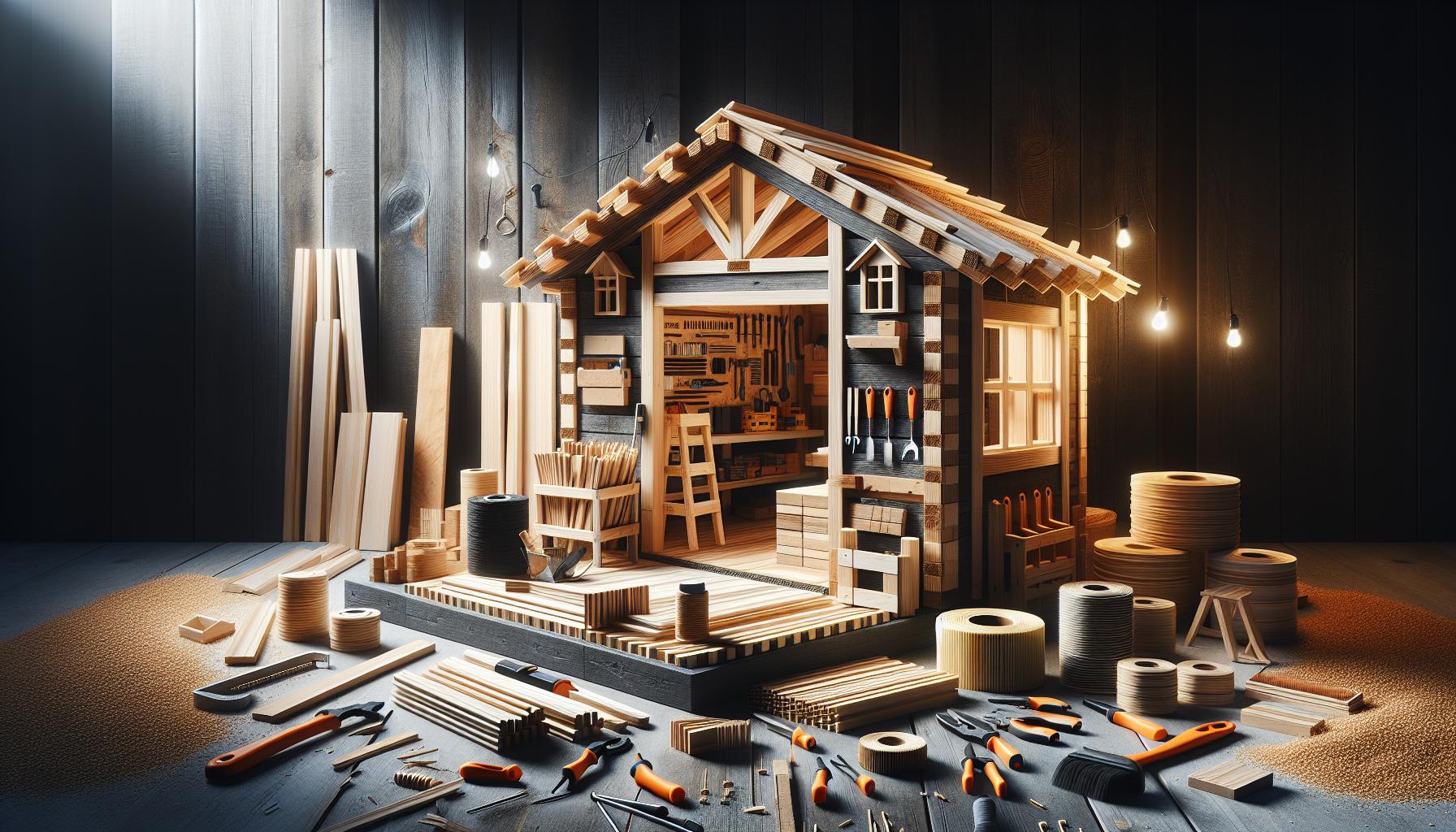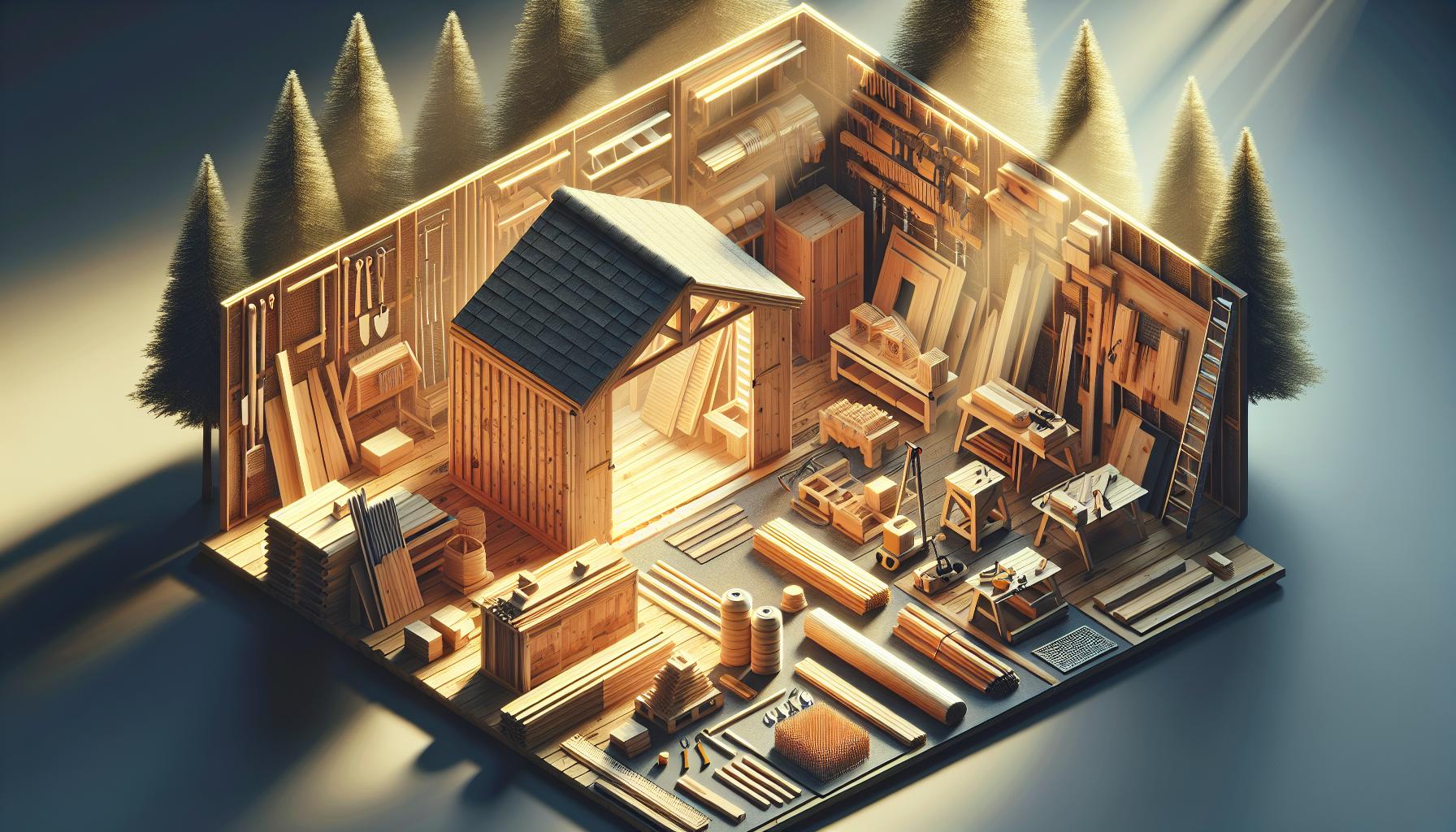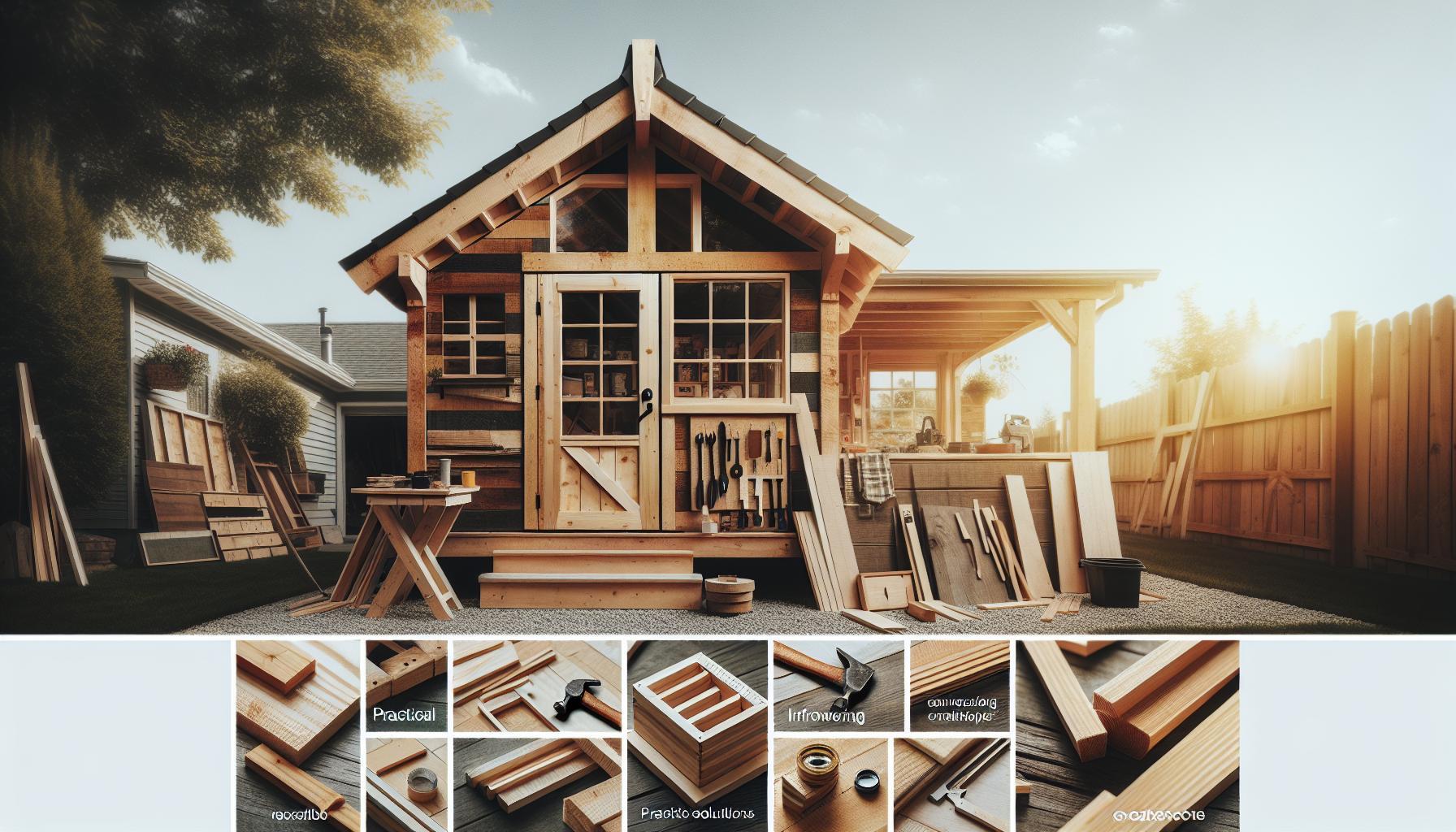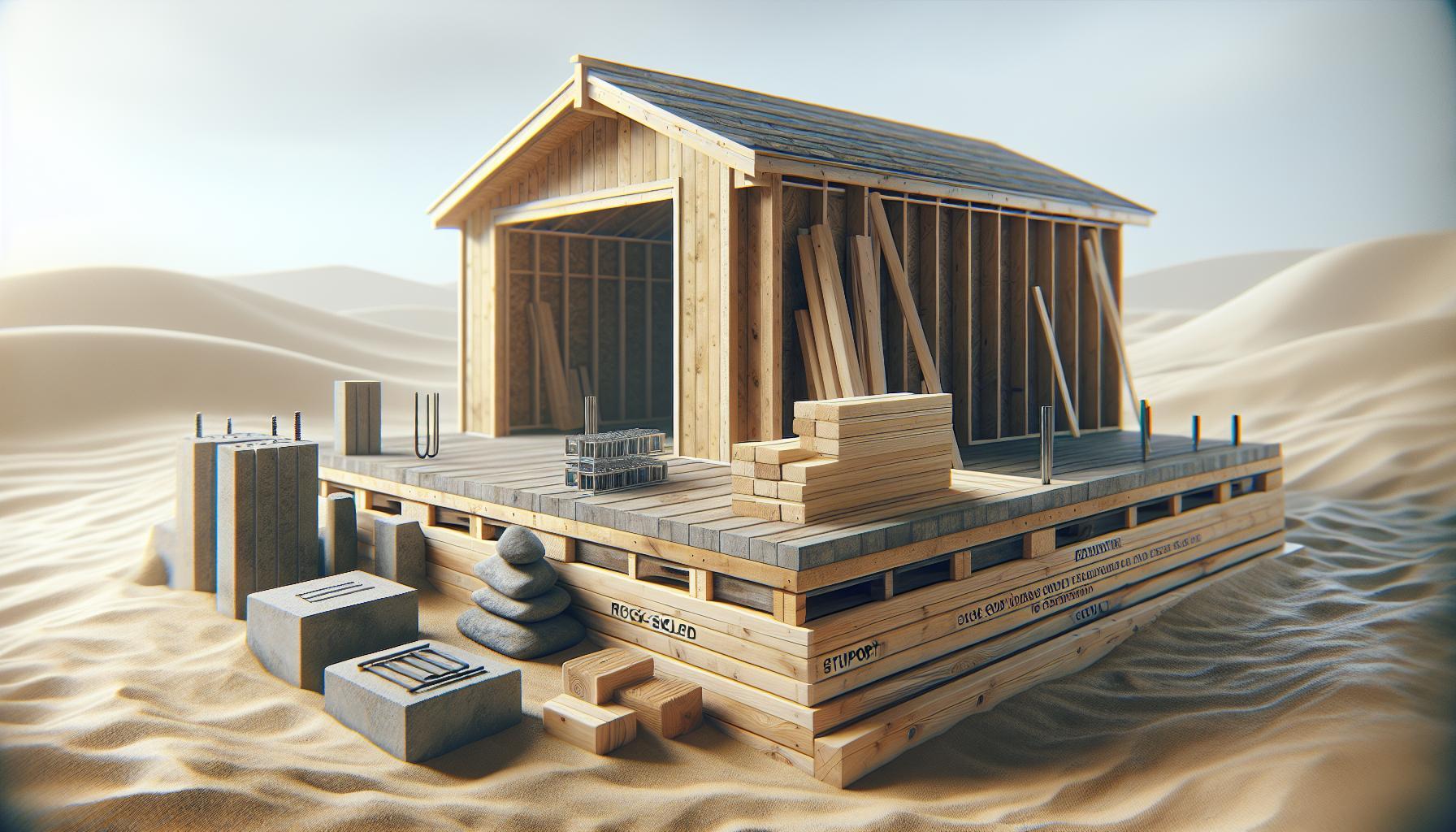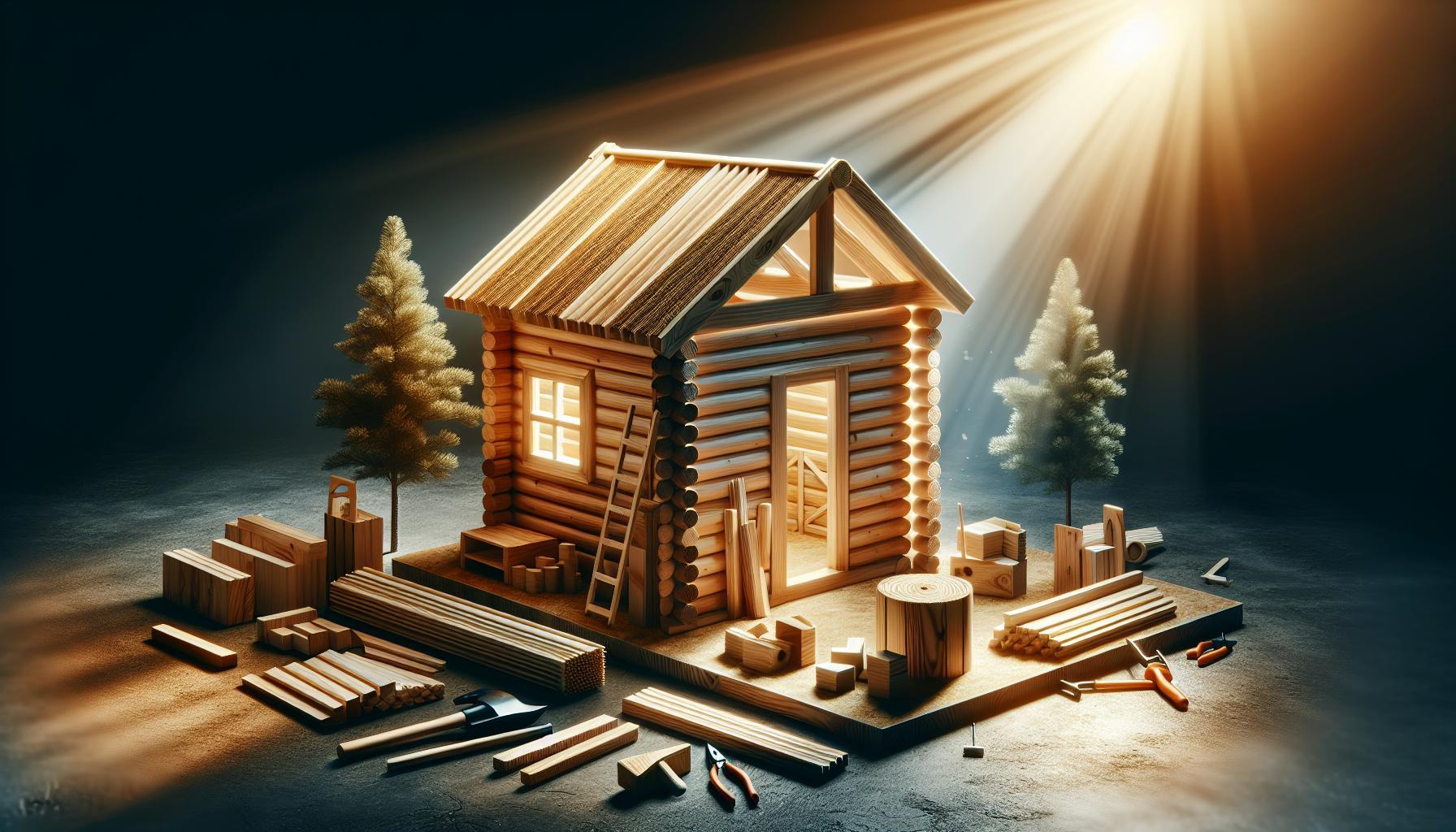Are you tired of your outdoor tools and equipment being left exposed to the elements? Building a sturdy deck for your shed not only protects your belongings but also enhances your yard’s aesthetic. In this guide, we’ll explore essential steps for creating a solid foundation that elevates your storage solutions and maximizes functionality.
Understanding the Importance of a Solid Deck Foundation for Your Shed
Building a sturdy deck foundation for your shed is not just a matter of aesthetics; it is crucial for the longevity and functionality of the structure. A well-constructed deck provides a stable and level base that protects your shed from the elements, such as moisture and pests, which can lead to rotting or deterioration over time. Without a solid foundation, even the most beautifully designed shed can quickly become a costly liability.
Benefits of a Solid Deck Foundation
- Moisture Management: A raised deck foundation allows air to circulate underneath the shed, significantly reducing the risk of moisture buildup that could lead to mold and mildew.
- Pest Prevention: Elevating your shed minimizes ground contact, making it harder for pests like termites and rodents to access your storage space.
- Enhanced Stability: A well-built deck foundation distributes weight evenly, offering better structural support, especially during harsh weather conditions.
- Improved Aesthetics: A level and attractive deck adds visual appeal to your yard, blending the shed seamlessly with the landscape.
Key Considerations for Building Your Shed Deck
When embarking on your project, several factors must be taken into account to ensure the success of your deck foundation:
- Site Selection: Choose a location that is well-drained and level to prevent water pooling around the base of your shed.
- Material Choices: Use durable materials like pressure-treated lumber or composite materials that are designed to withstand outdoor conditions and resist decay.
- Design elements: Incorporate a sloped base for drainage away from the shed to further minimize moisture issues.
- Height and Clearance: Ensure that your deck is elevated enough to provide adequate airflow without making it challenging to access the shed.
| Material | Pros | Cons |
|---|---|---|
| Pressure-treated wood | affordable, widely available | Can warp or crack over time |
| Composite decking | Durable, low-maintenance | higher initial cost |
| Cement blocks | Strong and stable | Poor insulation, can be heavy |
Investing time and resources to build an effective deck foundation for your shed can pay off significantly. Not only does it elevate your storage capabilities,but it also assures the protection of your valuable tools and equipment,ensuring they remain in excellent condition for years to come. Implementing these principles will arm you with the knowledge necessary for a prosperous construction project, illustrating how to elevate your storage with a robust foundation.
Choosing the right Materials: Wood,Composite,or Alternatives?
Choosing the right materials for your shed deck is crucial, as they directly impact the structure’s durability, aesthetic appeal, and overall maintenance. With various options available—ranging from traditional wood to innovative composites—it’s essential to understand the pros and cons of each material type. This knowledge will empower you to create a sturdy foundation that not only elevates your storage space but also complements your overall landscape.
Wood
Natural wood, such as pressure-treated lumber or cedar, is often favored for decking due to its traditional charm and versatility. Here are some attributes to consider:
- Durability: Properly treated wood can resist rot and insect damage, ensuring longevity.
- Aesthetic Appeal: Wood offers a rich natural look that enhances the beauty of your shed and garden.
- Cost-Effectiveness: Generally, wood tends to be less expensive than composite alternatives upfront.
However, wood does require regular maintenance, including staining and sealing, to maintain its appearance and prevent deterioration over time.
Composite Materials
Composite decking has gained popularity in recent years as a blend of plastic and wood fibers, providing a modern alternative that minimizes some of the shortcomings of natural wood. Factors to consider include:
- Low Maintenance: Composite materials resist fading, staining, and insect infestation, needing only periodic cleaning.
- Eco-Friendly Options: Many composite products are made from recycled materials, making them a sustainable choice.
- Variety of Styles: Available in numerous colors and textures, composite decking can mimic the appearance of wood without the associated upkeep.
While the initial investment for composites may be higher, their long lifespan and low maintenance needs often result in overall savings.
Alternatives: Vinyl and Aluminum
For those seeking exceptionally low maintenance or unique visual appeal, alternatives like vinyl and aluminum decking are worth exploring:
- Vinyl: This material can replicate the look of wood and offers impressive weather resistance. It’s lightweight and simple to install but can be susceptible to fading over time.
- Aluminum: Highly durable and resistant to rust and insects, aluminum decking is ideal for coastal areas. It’s incredibly low maintenance,though it often comes at a steeper price point.
To aid in your decision-making process, the table below outlines key characteristics of each material:
| Material | Durability | Maintenance | Cost |
|---|---|---|---|
| Wood | Good (with treatment) | High (staining/sealing) | Lower initial cost |
| Composite | Excellent | Low | Higher initial cost |
| Vinyl | Good | Low | Medium |
| Aluminum | Excellent | very low | Higher |
Ultimately, the choice of material hinges on your budget, aesthetic preferences, and willingness to perform maintenance. Whether you opt for the timeless appeal of wood, the longevity of composites, or the innovative designs of vinyl or aluminum, making an informed choice will ensure your shed deck effectively serves its purpose while elevating the storage experience.
Step-by-Step Guide to Planning Your deck Design
Designing a deck for your shed can transform your outdoor storage into a functional and aesthetically pleasing space. A well-planned deck not only elevates your storage area but also enhances your overall property value.Here’s a thorough guide to planning your deck design, ensuring every aspect is thoughtfully considered.
Define Your Purpose
Before diving into aesthetic choices and materials, clarify the main purpose of your deck.Are you looking for additional storage, a workspace, or a relaxation area? Clearly defining the purpose will guide your design choices and functionality. consider these options:
- Storage: Integrate built-in shelves or benches.
- Work Area: Design a space for tools and equipment with easy access.
- relaxation: Add seating and perhaps a small fire pit for leisure.
Measure Your space
Once you’ve persistent the purpose, it’s time to measure your available space. Accurate measurements are crucial for a well-fitting design. Use the following guidelines:
| Measurement Aspect | Recommendation |
|---|---|
| Width & length | Measure the area where the deck will be placed; allow for accessibility. |
| Height | Consider how high the deck needs to be to ensure proper drainage. |
| Proximity to Structures | Maintain distance from existing structures for safety and access. |
choose the Right Materials
Selecting the appropriate materials is a pivotal step in deck planning. The materials should align with the intended use and climate conditions.Some popular options include:
- Wood: Treated lumber is cost-effective and visually appealing.
- Composite Materials: These are low-maintenance and resistant to rotting.
- Metal Decking: While more industrial,metal is durable and weather-resistant.
Don’t forget to take into consideration your local weather and environmental conditions. For instance, if you live in a humid area, opt for materials that withstand moisture effectively.
As you progress through the planning phase, remember that creating a deck for your shed can elevate not only your storage solution but also your enjoyment of the outdoor space. Balancing functionality with aesthetics will ensure that your deck design stands the test of time, enhancing both utility and style.
Essential Tools and Equipment for a Successful Build
To create a sturdy and visually appealing deck for your shed, it’s essential to gather the right tools and equipment before you start. Having the proper tools not only streamlines the construction process but also ensures a professional finish that can elevate the overall functionality of your storage space. From measuring accurately to executing cuts with precision, each tool plays a vital role in achieving the desired outcome.
key tools for Building Your deck
When you embark on your project of how to build a deck for a shed, certain tools become indispensable.Here’s a list of essential equipment that will enhance your building experience:
- Measuring Tape: accurate measurements are critical. A durable measuring tape ensures that your dimensions are precise, which is vital for fitting components together smoothly.
- Level: To ensure your deck is perfectly horizontal and structurally sound,a quality level is a must. It helps avoid water pooling, which could compromise the integrity of your shed.
- Miter Saw: This tool is perfect for making clean, angled cuts at varying degrees, essential for framing and decking boards.
- Drill/Driver: A cordless drill/driver will allow you to quickly screw down individual deck boards and fixtures without unneeded hassle.
- Chalk Line: This tool helps in marking long, straight lines across the decks to guide your cuts accurately.
- safety Equipment: Always wear safety goggles and gloves. Protecting yourself is as important as constructing a safe and sturdy deck.
Helpful Accessories and Additional Tools
While the core tools are essential, considering some accessories can make the job easier:
- Decking Clips: These help in securing boards without visible screws, contributing to a cleaner look.
- Impact Driver: For tougher screws and fasteners, an impact driver provides extra torque to drive screws in quickly.
- Material Lifter: As you work with heavy lumber, a material lifter can be very helpful in positioning items without strain.
Considerations for Tool Selection
Choosing the right tools is just as crucial as knowing how to use them. Consider investing in high-quality tools, as they tend to be more durable and offer better performance than cheaper alternatives. Rental options are also available for larger equipment if you only need them for your deck-building project.
Utilizing these essential tools and equipment will make your deck-building project not only successful but also enjoyable. As you delve into how to build a deck for a shed, remember that readiness and the right gear can significantly enhance your project outcomes, leading to a durable foundation that will support your storage needs for years to come.
Navigating Local Building Codes and Permits for Your Shed Deck
When embarking on the journey of adding a deck to your shed, it’s essential to understand the role of local building codes and permits in ensuring a smooth project. Many homeowners overlook this critical step, often leading to costly fines or the need for expensive modifications. By familiarizing yourself with specific regulations, you not only protect your investment but also enhance the safety, functionality, and longevity of your deck.
Building codes vary widely by locality; thus, the first step is to consult your local building authority. These codes establish minimum standards for construction, including structural integrity, safety, and accessibility. In many jurisdictions, adding a deck—even one that’s directly attached to a shed—falls under the requirement for a building permit. It’s vital to check regulations before starting construction,as some areas have restrictions on height,size,and location which can affect your project plans.
Here’s a speedy checklist to guide you through the process:
- Research Local Codes: Visit your local government or planning department website to find specific building codes related to sheds and decks.
- Determine Permit requirements: Identify if a permit is necessary for your project—this usually depends on the size and type of your deck.
- Gather Necessary Documents: Prepare any architectural plans, site surveys, and property line details that may be required.
- Submit Your Submission: Fill out the permit application accurately,as incorrect information can delay approvals.
- Schedule Inspections: Once you receive a permit, ensure that you have your work inspected at various stages of construction as required.
Stay proactive by maintaining clear communication with local authorities throughout your project. You might find that they can offer additional insights or versatility that could save you time during the deck construction. Moreover, consider engaging with local contractors or builders; they often have invaluable experience navigating the local building landscape, ensuring compliance while helping fulfill your vision of elevating your shed’s functionality with a well-constructed deck.
Tips for Ensuring Proper Drainage and Stability
When crafting a sturdy deck for your shed, understanding the principles of proper drainage and stability is vital to ensuring longevity and functionality. Poor drainage leads to water accumulation, which can compromise the structural integrity of your deck and shed, while instability can significantly affect usability. Here are strategic tips to help you achieve a well-drained and stable foundation for your storage solution.
Assess Your Site’s Topography
Before construction begins, carefully evaluate the drainage patterns of your chosen location. Identifying any slopes or low spots will provide critical insights into how water flows on your property. Make sure to:
- Look for natural drainage routes and avoid placing your deck in low-lying areas where water collects.
- Consider the proximity of trees or large plants that may create organic debris that blocks drainage.
- Observe the seasons to understand how rainfall affects your site.
Utilize Proper Materials
Selecting the right materials can significantly improve your deck’s durability and stability. Consider using:
- Treated Lumber: For reducing decay and increasing lifespan. Make sure it’s rated for ground contact.
- Composite Decking: This is resistant to moisture and won’t warp easily, making it an excellent option for a shed’s deck.
- Gravel or crushed Stone: As a base layer to promote drainage and prevent soil erosion.
Incorporate effective Drainage Solutions
Enhancing drainage systems is essential to managing excess water effectively. Here are several options to consider:
- Deck Level and Slope: Ensure your deck is slightly sloped away from your shed to encourage proper water runoff.
- Drains and Gutters: Install these around the shed to redirect water away from the deck area.
- French Drains: Buried pipes or trenches filled with gravel can help channel water away effectively.
You might also want to incorporate a gravel perimeter surrounding the deck. The gravel helps absorb rainfall,preventing water from pooling around the shed’s foundation.
Regular Maintenance Checks
Once your deck is built, ongoing maintenance is critical. Regular inspections will help catch any potential issues early and maintain proper drainage:
- Clear Debris: Regularly remove leaves and vegetation that could obstruct drainage.
- Check for Erosion: Inspect the soil around the deck foundation after heavy rain to ensure that it remains stable.
- Evaluate Sealing: Check for water damage and consider sealing your deck periodically to protect against moisture absorption.
Taking the time to follow these steps not only enhances the functionality of your deck but also secures its foundation against water damage, ensuring your storage space remains efficient for years to come. Embracing a proactive approach as you learn how to build a deck for a shed will elevate your storage experience while safeguarding your investment.
Enhancing Your Space: Creative Ideas for Deck Additions
When it comes to transforming your outdoor space, deck additions can significantly enhance both functionality and aesthetics. Rather of merely serving as a foundation for your shed, a well-designed deck can become an inviting outdoor area that seamlessly integrates with your garden. This allows you to utilize your shed’s storage capabilities while also creating a versatile space for relaxation and entertainment.
Incorporating a Multi-Purpose seating Area
One of the most appealing enhancements to consider is a multi-purpose seating area. This can be particularly beneficial if you plan to use your shed for hobbies or gardening activities. Comfortable seating can provide a relaxing spot to unwind after a long day of yard work or a place for friends to gather. Think about adding:
- Built-in Benches: Construct benches along the edges of the deck for an unobtrusive seating solution that maximizes space.
- Barbecue or Fire Pits: Integrate a small barbecue grill or fire pit to create a cozy atmosphere for evening gatherings.
- Shade Solutions: Consider installing a pergola or shade sails to protect seating areas from the sun, making them usable in varying weather.
Vertical Gardens and Plant Features
To further enhance the aesthetics of your deck, incorporate vertical garden features or planters.This not only beautifies the space but can also provide fresh herbs for your kitchen or flowers to brighten your outdoor area. Here are some ideas to get you started:
- Vertical Planter Boxes: Build or purchase vertical planters that save on ground space and create a lush,green backdrop.
- Hanging baskets: Install hooks on the perimeter of your deck for hanging flower baskets that drape elegantly.
- Green Walls: Consider a trellis system where climbing plants can thrive, offering shade while improving air quality.
Storage Solutions on the Deck
If you want to blend functionality with style, consider creative storage solutions. The deck itself can become a part of your institution system:
| Storage Option | Benefits |
|---|---|
| Under-Deck Storage: Utilize the space beneath your deck. | Ideal for stowing away seasonal items while keeping them easily accessible. |
| Containers and Bins: Decorative storage boxes. | Provide extra seating while also serving as a clever storage solution. |
| Built-in Cabinets: Custom-built cabinetry. | offers a seamless look and maximizes your shed’s functionality by extending storage outside. |
By embracing the possibilities of deck additions, you can create a delightful outdoor oasis that compliments your shed while enhancing your overall lifestyle. Thoughtful integration of seating arrangements, vertical gardens, and smart storage solutions can transform your deck into both a practical and visually stunning feature of your home.
Maintaining Your Deck: Tips for longevity and Care
Building a sturdy deck for your shed isn’t just about the initial construction; maintaining it over time is vital to ensuring its longevity and usefulness. A well-cared-for deck can not only improve the appearance of your shed but also prevent costly repairs down the line. Just like any aspect of home improvement, proactive maintenance can offer ample benefits. Here are some essential tips to keep your shed’s foundation in peak condition.
Regular Cleaning
Dirt,leaves,and debris can accumulate on your deck,leading to mold or mildew growth if left unattended. Make it a habit to clean your deck regularly. Here are some steps to follow:
- Debris Removal: Sweep or use a blower to remove leaves, twigs, and dirt.
- Washing: Use a mild soap solution and a stiff brush or a power washer to clean the surface, ensuring you don’t damage the wood.
- Inspection: While cleaning, take note of any wear and tear or loose boards that may need attention.
Sealing and Staining
Applying a sealant or stain can significantly extend the life of your deck, protecting it from the elements. It’s advisable to reapply sealant every one to two years, depending on your climate:
| Climate Type | Sealant Application Frequency |
|---|---|
| Wet and Humid | Every 1 Year |
| Moderate | every 1-2 Years |
| Dry and Arid | Every 2-3 Years |
Routine Checks for Damage
Frequent inspections are crucial for early detection of potential problems.Look for signs such as:
- Cracks or Splitting: This can occur due to weather changes and moisture exposure.
- Loose fasteners: Regularly check screws and nails, tightening or replacing as necessary.
- Rotting Wood: Turn over boards if you notice any discoloration or softness to evaluate their integrity.
By following these maintenance tips, you can significantly enhance the durability of your deck, ensuring that your shed remains a reliable storage solution for years to come. Regular attention will keep your foundation solid, preventing issues that detract from your overall investment in creating a functional outdoor space.
FAQ
How to Build a Deck for a Shed: Elevate Your Storage with This Foundation?
To build a deck for a shed, start by selecting a suitable location and gathering the necessary materials—pressure-treated wood, concrete blocks, and fasteners. The deck provides a durable, stable base for your storage needs.
Begin by measuring your desired deck size, then level the ground and place concrete blocks as footings for extra support. Construct the frame using sturdy lumber and secure it well. add decking boards on top. For detailed instructions, check out this guide on building a shed base.
What materials do I need to build a deck for a shed?
You will need pressure-treated wood, concrete blocks, screws, and possibly landscaping fabric for weed control. These materials ensure durability and longevity, keeping your shed safe from moisture.
It’s important to consider the size of your deck and the type of shed you are supporting. For example, larger sheds may require thicker beams or additional bracing. Don’t forget to check local building codes and regulations, as they can influence the materials you need.
Why does a deck matter for a shed?
A deck elevates your shed, protecting it from moisture and pests. This contributes to the overall durability of your storage, extending its lifespan and functionality.
Additionally, a well-constructed deck can improve accessibility, making it easier to enter and organize your space. It can even enhance the aesthetics of your backyard, giving it a more finished look. Ensure your deck design complements your shed style for optimal visual harmony.
Can I build a deck for a shed on a slope?
Yes, you can build a deck for a shed on a slope, but it requires extra planning and careful adjustments. Proper leveling is crucial to ensure stability and safety.
To do this, you may need to use additional posts or build retaining walls. Adjusting the height of your deck allows you to create a level surface for the shed, even on uneven terrain. Be sure to follow safety guidelines and check with city codes before starting your project.
How much does it cost to build a deck for a shed?
the cost to build a deck for a shed varies widely based on size, materials, and labor. On average, you might spend between $500 and $2,000.
Factors influencing cost include the type of wood you choose, pricing in your local market, and whether you hire professionals or do it yourself. planning wisely can definitely help you manage costs while ensuring quality. Don’t forget to explore local suppliers for materials to find the best deals.
What is the best height for a shed deck?
The ideal height for a shed deck is generally 4 to 6 inches above ground level. This height effectively prevents water accumulation and pest infiltration.
Though, consider local rainfall patterns and drainage in your area.Adjusting the height ensures that your deck remains functional and protects your shed. If you live in a rainy region, raising your deck further might be beneficial for additional water runoff.
Do I need a permit to build a deck for a shed?
Whether you need a permit for building a deck for a shed depends on local regulations. Many jurisdictions require permits for structures over a certain size.
Check with your local building department to understand the specific requirements in your area. Obtaining the proper permits can save you from potential fines and ensure your deck adheres to safety standards. Stay informed to enjoy your project worry-free!
How long does it take to build a deck for a shed?
Building a deck for a shed can take anywhere from one weekend to several weeks,depending on your experience,deck size,and complexity of the design.
For beginners, building a simple deck may take longer as you familiarize yourself with the process and tools. Planning your work in advance and scheduling breaks can enhance your efficiency and enjoyment. engaging friends or family can ease the workload and create a fun experience.
Closing Remarks
building a deck for your shed is not just about creating a sturdy base; it’s about enhancing your storage experience and maximizing functionality.As we’ve explored, begin by assessing your needs and understanding local building codes to avoid any legal pitfalls. Choose materials wisely—consideration for durability and weather resistance is key to a lasting structure.
Don’t shy away from measuring accurately and leveling your frame; these technical skills are within your reach with practice. Remember, while the process may seem daunting, each step you take builds not just the deck but also your confidence as a builder. Embrace the learning curve, celebrate the small victories, and soon you’ll find yourself equipped to tackle even more ambitious projects.
We invite you to dive deeper into the world of DIY by exploring our other articles, and don’t hesitate to share your experiences or ask questions in the comments. Building is a journey best enjoyed together, and we’re here to support you every step of the way!


